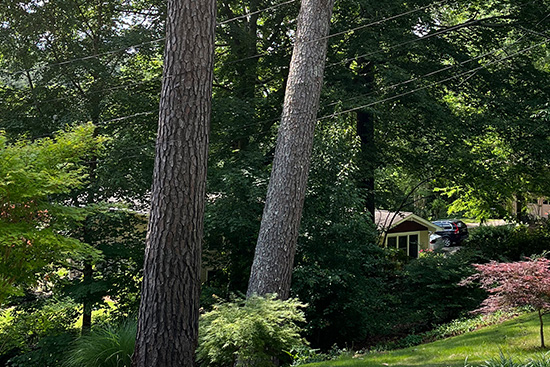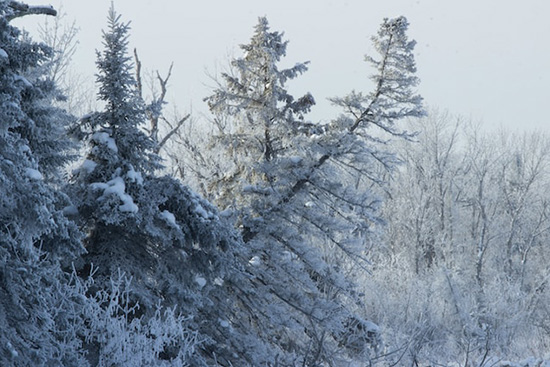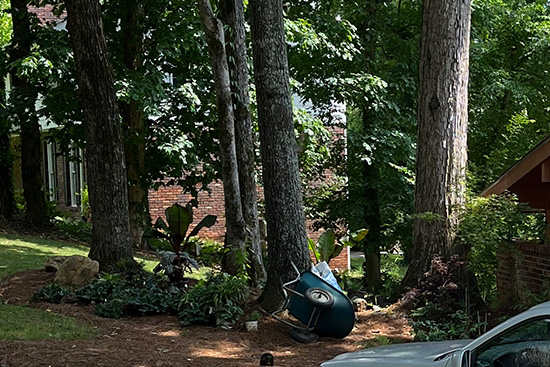
Need help figuring out why your tree is leaning? Understanding why trees suddenly lean will help you prevent catastrophic damages and them falling on your property.
72tree.com gathered the following information to help you accurately identify why your tree is leaning and what you can do to protect your property, home, and well-being.
Some trees lean, and you may have wondered why this happens. Consider the following reasons trees lean, what it means for their health and safety, and what you should do about it.
There are multiple reasons why trees lean. The most common cause is strong prevailing winds or heavy snow and ice loads pushing the tree from its vertical axis. Trees naturally tend to grow straight up towards the sun, but environmental factors like wind and snow can cause them to tilt. Over time, this tilt can become more pronounced, resulting in a leaning tree.

Another reason for tree lean is the uneven weight distribution on the trunk. Trees with a heavy canopy (on one side) or those growing on a slope may develop a lean towards the lighter side to maintain balance. This is common in deciduous trees that have lost multiple or heavy branches on one side.
Tree lean can also be a sign of root rot or damage. A tree’s root system is fundamental for providing a tree’s stability and anchorage. A tree may lean when roots rot or are damaged due to soil erosion or compaction. This is common in areas with a high water table or soil prone to erosion.
Note: Some tree species are more prone to leaning than others. Conifer trees, like pines, are more likely to develop a lean due to their shallow root system. While trees like oaks have deep taproots that provide greater stability and reduce the risk of leaning.
While some tree lean is natural and harmless, excessive leaning can indicate a severe health issue. A leaning tree may indicate root rot, a fungal disease that can cause a tree’s root system to weaken and ultimately fail.
Tip: If you notice a tree leaning significantly, it’s crucial to have it inspected by a professional arborist quickly to determine the cause and assess the risk of the tree falling.
For property owners, a leaning tree can be an alarming cause for concern. While some tree lean is natural and harmless, excessive leaning can indicate a health issue that must be quickly addressed. Here are some factors in determining whether a leaning tree is a cause for concern:
Degree of Lean – If your tree is leaning at an angle greater than 15 degrees, it may be a sign of a significant problem. Trees severely leaning can be dangerous and may need to be removed to ensure people’s and property’s safety.
Leaning Speed – If you notice the tree has started to lean suddenly or at a fast pace, it may indicate an advanced health issue. This could result from root damage or other underlying problems that must be addressed quickly.
Tree Condition – If your tree has dead or broken branches, signs of decay, or other visible damage, it may be more likely to lean. A weakened tree may not withstand strong winds or other environmental factors, leading to a more significant lean.
Location – If the leaning tree is growing near a building or other large structure, it could pose a significant risk. In such cases, it’s crucial to have the tree inspected by a professional arborist to assess the tree’s health and risk and determine the best course of action.

If you notice a leaning tree on your property, don’t delay in deciding when to remove it. Taking prompt action is crucial because waiting can significantly increase the risk of it falling and causing catastrophic or life-threatening injury.
Tip: An arborist can inspect the tree, determine the cause of the lean, and recommend the best course of action, whether pruning, cabling, or removal. Protecting your tree is paramount to ensuring your family and property’s safety.
Phototropism is a plant’s natural response to light. It’s a process in which a plant’s cells respond to the direction and intensity of light, causing the plant to grow, lean, or move toward the sun or light source.
Trees also utilize phototropism to grow toward the sun. When a tree’s leaves or branches are shaded by other trees or structures, the tree will instinctively grow towards the light source to ensure maximum exposure to sunlight. This allows the tree to produce maximum energy through photosynthesis.
The phototropic response in trees is controlled by hormones called auxins. Auxins are produced in the growing tips of the tree’s shoots and are transported down the stem, where they promote cell elongation (on the tree’s shaded side). This process causes the tree to bend towards the sun, resulting in positive phototropism.
Positive phototropism is crucial for a tree’s healthy growth. Without it, trees may be stunted or malformed from inadequate exposure to sunlight.
Note: Phototropism allows trees to adjust growth patterns in response to changing light conditions, like the sun’s shifting angle during different seasons.
In this article, you discovered several reasons that trees lean and what you can do to keep your property, home, and loved ones safe.
Knowing what causes trees to lean will help you take swift and appropriate action to save or remove your tree.
Failing to quickly identify and properly address the potential cause of your leaning tree may result in catastrophic damages to your property or injury to a person.
Sources:
extension.tennessee.edu/publications/Documents/sp573.pdf
extension.umd.edu/resource/how-do-you-decide-when-remove-tree
extension.psu.edu/what-to-do-about-leaning-trees
bio.libretexts.org/Bookshelves/Introductory_and_General_Biology/General_Biology_1e_(OpenStax)/6%3A_Plant_Structure_and_Function/30%3A_Plant_Form_and_Physiology/30.6%3A_Plant_Sensory_Systems_and_Responses